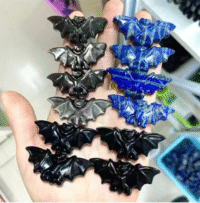Ever gave a thought about some of the tiny things which make the medical world turn? The flashy machines and high-tech monitors – no, the unsung heroes that do their work quietly, each and every day. Syringe caps are one of them.The small plastic bits may not appear very important at first, but when you work in the healthcare or veterinary care industry, you know how much they can matter. These protect medications, maintain sterility and facilitate automation of daily procedures. And as patient care advances, whether for humans or animals, the role of these caps keeps growing.So let’s take a closer look at what makes syringe caps essential, how they’re used in both clinical and veterinary settings.
More Than Just a Cover
A syringe cap may appear like a disposable product to the untrained eye. However, to the medical world, it is like the syringe itself. Why? It is so because it is the seal between the inside of the syringe and everything else. Once medication is drawn or a blood sample is collected, that fluid needs to be kept uncontaminated. A cap makes sure nothing comes in and nothing seeps out. Particularly in fast-paced clinical settings, that seal would help avoid major complications, be it infection, dosage loss, or sample degradation.And what about cross-contamination? In a busy hospital or lab, capping a syringe properly keeps samples from mixing and keeps healthcare workers safer.
From the Hospital Floor to the Animal Clinic
Be it human healthcare or animal healthcare, the following concerns are similar: precision, hygiene, safety. A capped syringe will reduce stress and increase control in a veterinary clinic where pets may be squirmy, unpredictable or downright stubborn. No spills. No missing medication. No sudden pricks. And since pet doses are highly small and ultra particular, each drop counts. Syringe caps help make sure what’s measured is what’s delivered.In both cases, it’s about protecting the medication, the patient, and the professional holding the syringe.
Syringe Caps in Lab Work
Not only clinics and hospitals. The use of syringe caps is central in laboratories as well.The safe seal is non-negotiable when it comes to drawing and transporting fluid, be it, the blood, chemical solutions, or medication samples. It keeps air out, reduces evaporation, and helps maintain the integrity of what’s being tested or analyzed.This is a simple tool that helps the lab techs to keep things in order, predictable, and safe. And when every microliter matters, syringe caps can help avoid sample loss, contamination or mix-ups that could skew results.
Stability and Shelf Life Matter
Suppose that a nurse preps several syringes before shift change. Or a vet draws up multiple sedative doses before a spay/neuter clinic begins. Without caps, those syringes would have to be used immediately, and they would be susceptible to contamination or degradation.Caps come in handy to keep things that can be fast stored and prepared. That is particularly necessary in cases of an emergency or mass treatment situations where timing is everything. It’s not just about convenience, but keeping the quality of what’s inside the barrel until it is required.
One Size Doesn’t Fit All
Syringe caps aren’t universal, and that’s a good thing.Different tasks require different types. Some caps are vented to allow air to escape while preventing backflow. Others are luer-lock for a secure twist-fit that won’t come off accidentally. Then there are color-coded caps to help organize medications or differentiate between similar-looking syringes.This kind of versatility is what makes syringe caps such a key part of any medical toolkit.
Better Safety for Everyone
Open syringes are hazardous. They pose a danger to patients, medical staffs, laboratory technicians, and any one within reach. Capping a syringe is an important safety procedure, be it in terms of needlesticks injury or accidental spills.
Final Word
In a world where precision, safety, and hygiene is everything, syringe caps may appear to be a cog in the machine but they are achieving great things. Whether in the lab, surgical table or in your local pet clinic, these caps keep people safe, drugs intact, and pets healthy.
FAQs
Q: Are all syringe caps the same size?
A: Not exactly. They come in standard sizes to match common syringe types, but there are variations based on luer-lock, slip-tip, and specialty syringe designs. Always match your cap to your syringe for a secure fit.
Q: Can I reuse a syringe cap?
A: Generally, no. Most syringe caps are single-use for a reason—sterility. Once a cap has been on a syringe that’s held meds or samples, it should be disposed of properly.
Q: Why do vets use syringe caps so often?
A: Because animals move! Syringe caps help prevent accidental spills or injuries while keeping meds secure until the moment of injection. It’s about safety and control.
Q: Are syringe caps used during blood draws?
A: Yes. After the blood is collected, the syringe is often capped before it’s labeled and sent off to the lab. This helps avoid exposure and contamination.














Leave a comment